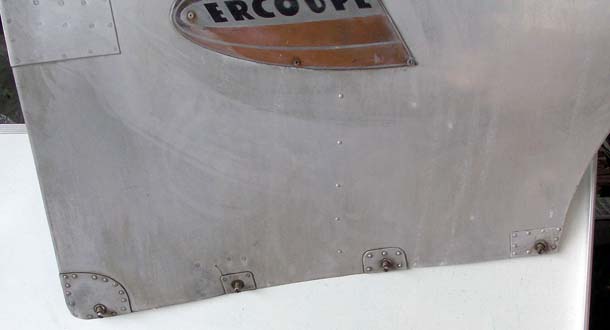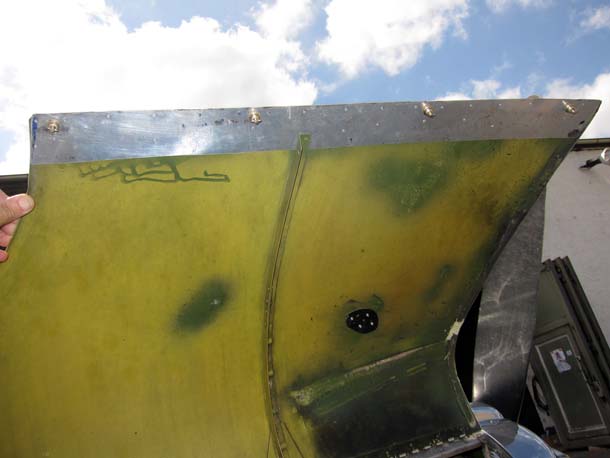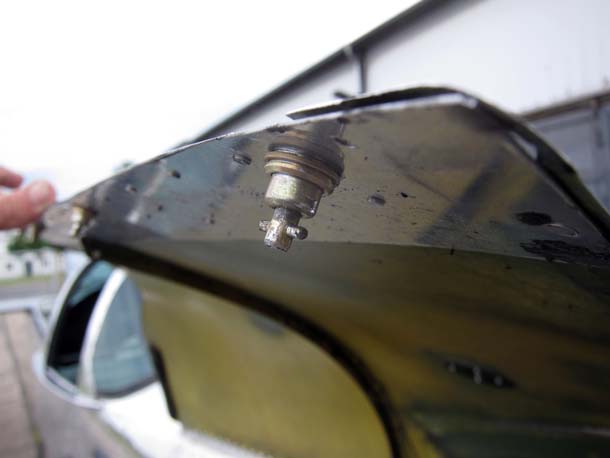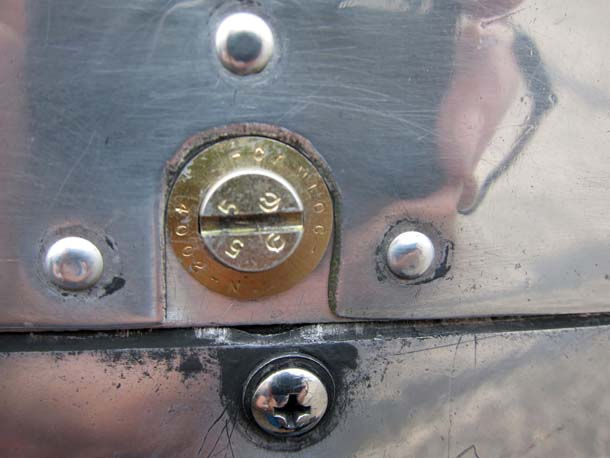How to address side cowling stress around the fasteners.
All side cowlings develop cracks around the fasteners over the time. This is due to the vibrations around the engine and normal wear so to say. But to avoid the complete loss of fasteners or ,god beware, having the cowling opening in flight and ripping it into pieces, repairs have to applied in time.
Most of the cowlings have been already patched over the years like this one.
 "
"The patches show the artistry of your mechanics that worked on these over time. Here we see a mix of four different styles.
 "
"But even the patched area gives after a while and repair is needed again. Patching the patch is not really what you want here. Patches stiffen the area, which is good, but the cowlings are following a slight curve on the bottom edge, so the fix should address the design.
Exactly this is done by the strips that Univair and Skyport are distributing. It is basically a doubler strip for the bottom edge of the cowling.
First the one that Univair used to distribute:
 "
"It is a channel strip that you rivet in place
 "
"Result is a clean looking outside cowling
Reinforcement inside inevitably thickens the cowl in that area and therefore increases the length of the Camlock required to go through the cowl and into the receptacle on the cowling frame. When a doubler was added to the frame to fix a crack in it, I had to install a longer Camlock; the doubler between the Camlock receptacle and the frame made the hole deeper and the Camlock had to be longer. They make a special tool to install Camlocks but I was able to get that new one in with a pair of Vicegrip pliers. The new cowls have longer Camlocks installed and I had to put in a still longer one when the A&P made that cowl frame repair. Wayne
Then the current one from Skyport:
 "
"It is basically an aluminum strip that has the fasteners already added ( they fit perfectly) and need to be cut to size after placing it.
 "
"The same problem occurs here when adding the doubler, longer fasteners may be needed. To circumvent this, the area around the old fasteners need to be dressed out. These areas are probably already compromised, so cleaning the old hole seems obvious.
 "
" "
"If dressed out this way, the fastener strip can easily be replaced if worn again plus cowling fit is not problematic.
 "
"Again a clean looking bottom edge.
Hartmut